Did you know that the average American spends over $18,000 per year on non-essential purchases?
That’s a lot of money going toward things you probably don’t need! You’re likely hanging onto several unnecessary items right now that are quietly draining your bank account.
From those dusty gym memberships to the countless streaming services you barely use, there’s a goldmine of savings just waiting to be uncovered.
Let’s explore how you can spot these money-wasters and transform your spending habits for good. 🎯
Table of Contents
1) Unused Gym Memberships

Want to avoid wasting money? Try these smart alternatives:
Costly money-wasting habits can drain your finances if left unchecked.
- Join group fitness classes (they have 56% better retention!)
- Start with a trial membership first
- Choose pay-per-visit options instead of contracts
2) Excess Food Delivery Services
Moving from unused gym memberships to another budget drain, let’s talk about those tempting food delivery apps!
You’re paying a whopping 40% premium on every delivery order – that’s like throwing away $14 on a $36 meal!
While these apps are super convenient, they’re silently eating away at your savings.
Consider this: When you order directly from restaurants, you’ll spend 35% more per order because you’re getting more food for your money instead of paying platform fees.
Plus, a reasonable $4 delivery fee is all you really need to pay.
Stop wasting money by cutting out these unnecessary delivery services and stick to pickup or cooking at home.
Break free from delivery app dependency – your wallet will thank you!
3) Duplicate Streaming Subscriptions
Three different streaming services might get you the same shows and movies you’re already watching elsewhere!
With content spread across multiple platforms, you’re probably paying twice (or more!) for overlapping entertainment.
Take a quick content inventory:
- List your must-watch shows
- Check which platforms have them
- Compare subscription costs
- Look for bundle deals
You’ll likely find that dropping duplicate subscriptions saves money without losing your favorite content.
Plus, many services now offer seasonal passes – so you can pause when your shows are off-season and restart when new episodes drop.
Following smart money hacks can help you maximize your entertainment budget while minimizing unnecessary expenses.
Smart streaming = more savings!
4) Trendy Fashion Items
| Fast Fashion vs Sustainable Choices | Impact |
|---|---|
| Annual Spending | $1,945 per U.S. household |
| Environmental Cost | 10% of global CO₂ emissions |
| Wear Rate | Only 50% of clothes regularly worn |
| Future Impact | $33.05B sustainable market by 2030 |
You’re probably wearing just half of what’s in your closet right now. Instead of chasing trends, focus on timeless pieces that’ll last longer and save you money.
Your planet (and wallet) will thank you! 🌍 Making smart frugal choices with your wardrobe is a proven strategy for building long-term wealth.
5) Luxury Phone Cases
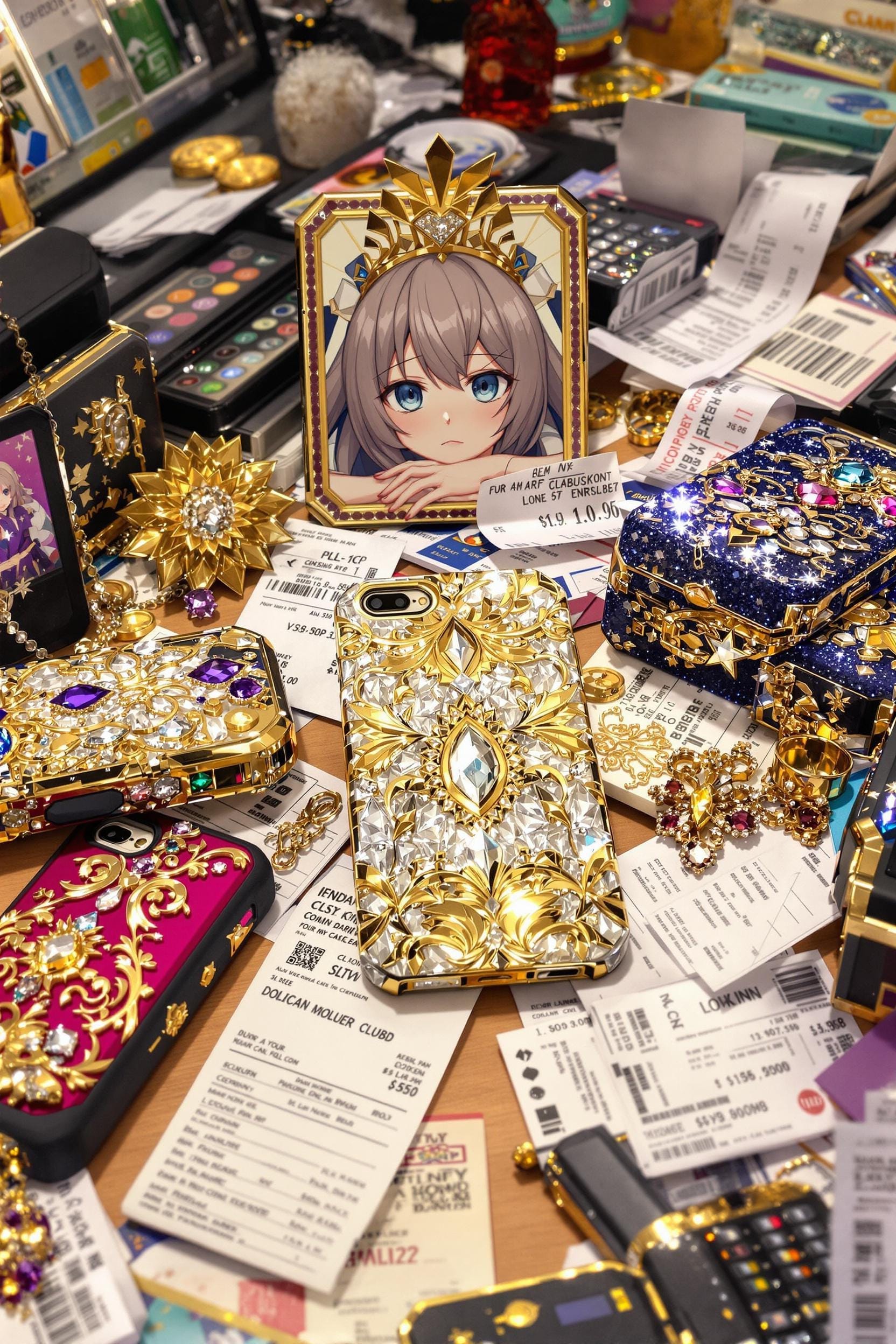
While protecting your phone is important, spending hundreds (or even thousands!) on luxury phone cases isn’t the smartest way to do it.
The premium phone case market is booming, but you don’t need to join this expensive trend!
Here’s why luxury phone cases are a waste of money:
- They often require special maintenance and care
- Basic cases provide the same level of protection
- You’ll likely replace them when you upgrade your phone
- Many are just overpriced due to brand names
Instead, opt for a quality mid-range case that offers great protection without the designer price tag.
You can find durable, attractive options for under $30 that’ll keep your phone just as safe.
Smart budgeting strategies help low-income households build savings without sacrificing essential protection for their devices.
Put those savings toward something more meaningful!
6) Unused Mobile Apps
Speaking of wasting money on unnecessary things, let’s talk about those unused mobile apps cluttering up your phone!
Did you know that most people only regularly use about 20 apps, even though they’ve got around 80 installed? That’s a lot of wasted space and money!
Studies show that over 70% of people end up uninstalling apps within a week, usually because of annoying notifications or taking up too much memory.
Instead of wasting money on unused apps, consider exploring online earning opportunities that can actually generate income for you.
Before downloading your next paid app, remember: if it’s draining your battery, sending too many notifications, or requires multiple steps to use, you’ll probably delete it anyway.
Save your money and stick to apps you’ll actually use!
7) Brand Name Cleaning Products
Since brand name cleaning products keep getting more expensive, it’s time to take a closer look at what you’re really paying for!
While companies invest heavily in marketing their products, generic alternatives often work just as well.
You can save big by switching to store brands or making your own cleaners.
During tough financial times, smart shopping choices with cleaning supplies can make a real difference in your budget.
Here’s what you’re wasting money on:
- Premium packaging that ends up in the trash
- Celebrity endorsements and influencer marketing
- Fancy fragrances that don’t improve cleaning power
- Brand recognition that you’re paying extra for
Consider switching to affordable alternatives – they’ll clean just as effectively while keeping more money in your pocket!
Many eco-friendly options are also cheaper and better for the environment.
8) Expensive Coffee Drinks
As your daily coffee shop habit drains your wallet, you might be shocked to learn that Americans spend billions each year on fancy coffee drinks!
With lattes averaging $4.16 and often exceeding $7 with add-ons, those daily caffeine fixes add up fast.
Here’s the reality: over half of Americans buy coffee from shops weekly, and 8% grab it every day.
While most folks spend under $20 monthly at cafes, some shell out more than $40!
Instead of splurging on expensive drinks, consider making coffee at home.
You’ll save big, since most people spend just $11-$20 monthly on home-brewed coffee.
That’s quite a difference!
Try taking the 52-week savings challenge by putting aside your daily coffee shop money to watch your savings grow dramatically.
9) Fast Fashion Impulse Buys
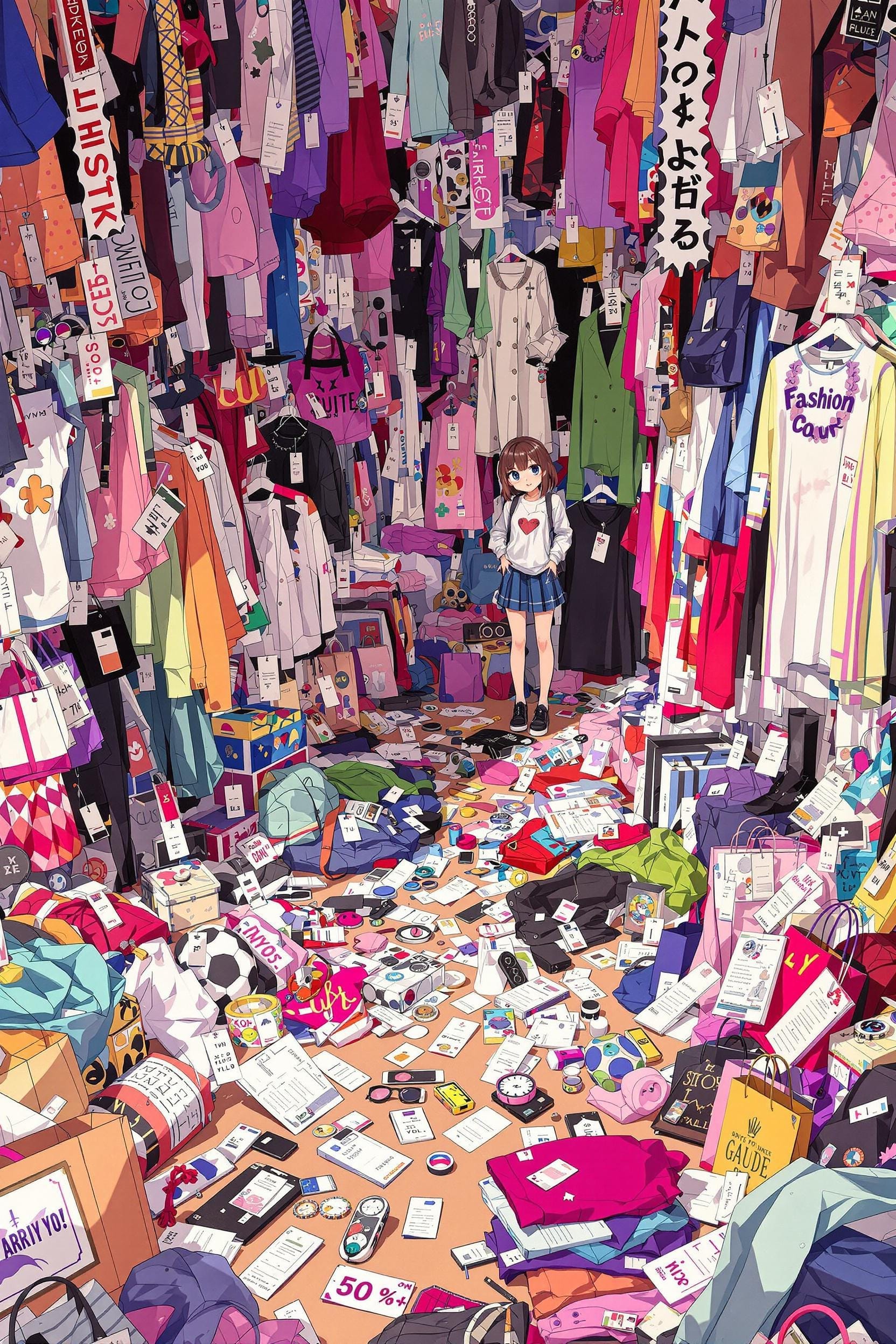
- Sits unworn with tags still attached
- Gets tossed after just a few wears
- Takes up valuable closet space
- Ends up forgotten at the back of your wardrobe
Instead of giving in to FOMO, try creating a capsule wardrobe with quality pieces.
You’ll save money, help the environment, and actually wear what you buy!
Consider shopping second-hand or waiting 24 hours before making any fashion purchase.
Smart thrift shopping can help you find high-quality clothes at a fraction of retail prices.
10) Multiple Gaming Subscriptions
Gaming subscriptions can quickly drain your wallet when you’re signed up for multiple services at once.
With the average person subscribing to 12 different services, you’re likely paying for games you rarely play!
Here’s the reality: Most gamers only play 4-5 games per year, and many popular titles are free-to-play anyway.
While services like Xbox Game Pass ($19.99/month) seem cheaper than buying games separately, they’re not worth it if you’re not actively playing multiple games.
Instead of multiple subscriptions, stick to one service that has the games you’ll actually play.
You’ll save money and avoid paying for content you’ll never use! 🎮
11) Unnecessary Beauty Products
The beauty industry thrives on making you feel like you need the latest miracle product or trending treatment.
But let’s be real – most of these products are unnecessary and just drain your wallet while harming the environment.
Here’s what you’re really buying into:
- Wasteful packaging that adds to plastic pollution
- Short-lived trends that’ll be “out” next season
- Products that often duplicate what you already have
- Marketing that preys on your insecurities
Instead of falling for every new beauty fad, stick to a simple routine with refillable products and minimal packaging.
You’ll save money and help the planet!
Consider making your own natural alternatives for basic skincare needs.
Adopting minimalist beauty habits can lead to significant financial abundance over time.
12) Bottled Water
Millions of people waste money daily on bottled water, falling for clever marketing that suggests it’s somehow better than what comes from your tap.
The truth? You’re mostly paying for plastic – about 90% of the cost goes to the bottle, cap, and label!
Here’s what you should know:
- Bottled water often contains more contaminants than tap water
- You’re spending up to $2 per bottle vs. less than a penny per tap liter
- Each year, it creates 2.5 million tons of CO2 emissions
- Only 33% of bottles get recycled
Switch to a reusable bottle and filter system. You’ll save money and help the planet! 🌍
13) Extended Warranties
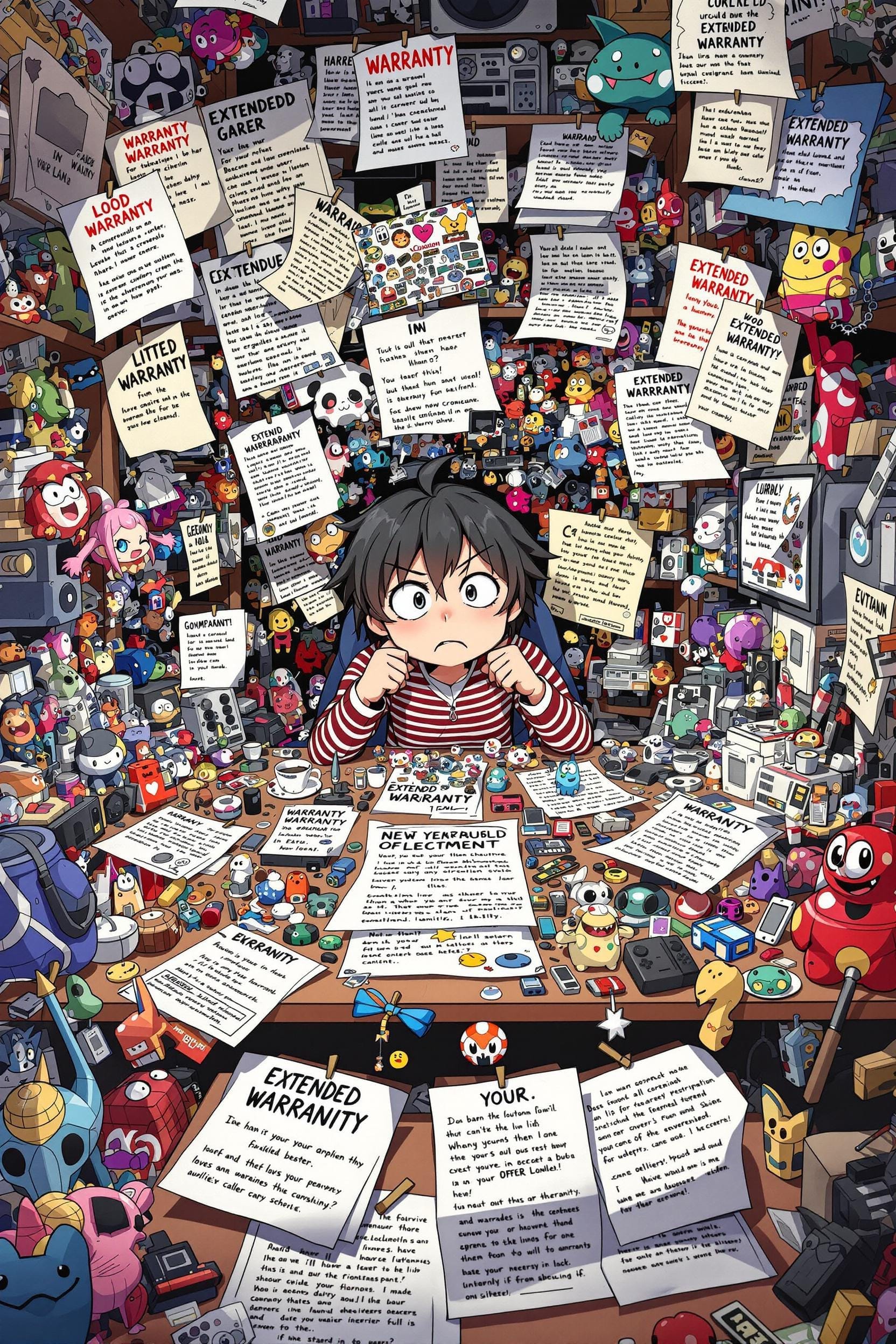
Speaking of money down the drain, retail salespeople love pushing extended warranties almost as much as bottled water companies love selling you tap water in plastic!
With profit margins up to 70%, it’s no wonder they’re enthusiastic to sell you that “protection plan.”
The truth is, most products won’t need repairs within the first three years, and your standard warranty usually provides enough coverage.
Here’s why you should skip extended warranties:
- Your credit card might already offer extended protection
- Regular warranties typically cover manufacturing defects
- Repair costs are often less than warranty prices
- Most electronics become outdated before breaking down
Save your money instead – you’ll thank yourself later!
14) Unused Kitchen Gadgets
While browsing through kitchen stores can feel exciting, those shiny single-purpose gadgets often end up collecting dust in your drawers!
Remember those electric knives and yogurt makers that seemed so essential? They’re probably sitting unused right now.
Instead of impulse-buying specialized tools, stick to versatile basics like measuring cups, can openers, and cutting boards.
If you’re tempted by a new gadget, ask yourself: “Will I use this regularly?” Multi-functional appliances like air fryers and blenders are worth the investment since they serve multiple purposes.
Don’t let marketing fool you – you’ll save money and reduce clutter by avoiding those one-trick gadgets!
15) Premium Cable Packages
Do you really need those expensive premium cable packages eating up your monthly budget? With costs ranging from $70 to over $100 monthly, plus hidden fees and long contracts, it’s time to cut the cord!
Today’s streaming services offer better alternatives at a fraction of the cost.
Here’s what you’re wasting money on with premium cable:
- Long-term contracts with early termination penalties
- Equipment rental fees and DVR charges
- Regional sports fees you mightn’t even use
- Duplicate content available on cheaper streaming platforms
Consider switching to basic cable packages starting at $24.99 or combining streaming services.
You’ll get the shows you love while keeping more money in your pocket!
16) Excessive Phone Storage Plans
If you’re paying for an unlimited data plan, chances are you’re throwing money away each month!
Studies show that most people use less than 15GB of data, yet 76% of us are paying for unlimited plans we don’t need.
Want to save big? Check your actual data usage (it’s easier than you think!) and consider switching to an MVNO plan.
These carriers use the same networks as the big guys but cost way less – we’re talking $30/month instead of $157! 😮
You could pocket over $1,500 a year by making this simple change.
Plus, most of us are on Wi-Fi anyway, so why pay for data you’ll never use?
17) Designer Office Supplies

Speaking of unnecessary expenses, those fancy designer office supplies might be emptying your wallet faster than you realize!
With today’s digital shift and remote work trends, splurging on premium stationery just doesn’t make sense anymore.
Consider these wallet-friendly alternatives instead:
- Shop basic supplies from online retailers
- Share resources with coworkers
- Choose eco-friendly alternatives
- Repurpose existing materials
You’ll be amazed at how much you can save by switching to practical options.
With the office supplies market growing slower than ever at just 1.54% annually, it’s clear that businesses are moving away from traditional stationery.
Focus on essential items that boost your productivity – your budget will thank you!
18) Duplicate Phone Chargers
Three charging cables for every device might seem like a smart backup plan, but those duplicate phone chargers are quietly draining your wallet and cluttering your space!
Instead, invest in one high-quality charger with advanced features like GaN technology. You’ll get faster charging speeds and better efficiency without the mess of multiple cords.
Plus, you’re helping the environment by reducing e-waste! 🌱
If you’re worried about running out of power, consider a single wireless charging pad for convenience.
Just remember to skip those tempting public charging stations – they can be cybersecurity risks.
One reliable charger is all you need to keep your devices powered up!
19) Name Brand Medications
Many people waste hundreds of dollars each year on brand-name medications when identical generic versions are sitting right next to them on the shelf!
Did you know generics make up 90% of U.S. prescriptions but cost way less? That’s because they’re just as effective but without the fancy marketing and packaging. You’re literally paying for the brand name!
Here’s why you should switch to generic medications:
- They cost about 67% less than brand names
- They contain the exact same active ingredients
- They’re FDA-approved and just as safe
- They work just as effectively as brand names
Ask your doctor or pharmacist about switching to generics – your wallet will thank you! 💊
20) Seasonal Decorations
Just like saving money on medications, your wallet could use a break from another spending trap – seasonal decorations!
With Americans spending an average of $231 annually on holiday decor, it’s time to rethink this expense.
Sure, decorations create wonderful memories, but you don’t need to buy new ones every year. Here’s why:
- Prices jumped 13% in 2022 alone
- Storage space gets crowded
- Items often break or go unused
- Trends change quickly
Instead, try these money-saving alternatives:
- Reuse decorations year after year
- Shop post-holiday sales
- Get creative with DIY projects
- Focus on a few meaningful pieces
Your home can still feel festive without breaking the bank! 🎄
21) Unworn Jewelry

While sparkly gems and precious metals can be tempting impulse buys, the average American spends over $430 yearly on jewelry that often sits unused in drawers and jewelry boxes.
Before making your next jewelry purchase, consider if you’ll actually wear it regularly!
To avoid collecting dust-gathering jewelry, watch out for these common buying mistakes:
- Buying pieces just because they’re trendy or on sale
- Making emotional impulse purchases without planning
- Choosing items that don’t match your lifestyle or wardrobe
- Splurging on expensive pieces you’re afraid to wear
Instead, invest in versatile pieces you’ll wear often.
22) Digital Magazine Subscriptions
Despite the convenience of digital magazines, your virtual subscription costs can quickly add up if you’re not careful with your spending!
With 70% of readers choosing digital for its special features, it’s easy to get caught up in subscribing to multiple magazines.
| Cost vs. Value | What You Get |
|---|---|
| $100+ per year | Multimedia content |
| Lower production costs | Instant access |
| Premium pricing | Interactive features |
| Monthly fees | Mobile convenience |
Before hitting that subscribe button, ask yourself: Do you actually read these magazines regularly?
Many digital subscriptions go unused, even though 91% of tablet readers pay more than they would for print versions.
Save money by choosing just one or two favorites that you’ll definitely read! 🎯
23) Expensive Gift Wrapping
As retailers continue driving up gift wrapping prices, you’re probably spending way more than necessary on fancy paper that ends up in the trash!
With the average household’s wrapping expenses climbing 35% in recent years, it’s time to rethink this wasteful habit.
Instead of splurging on expensive wrapping supplies, try these money-saving alternatives:
- Use plain brown kraft paper and dress it up with twine
- Repurpose newspaper or magazines for a vintage look
- Save and reuse gift bags from presents you receive
- Choose reusable fabric wraps that recipients can pass along
The gift wrapping industry tops $19 billion annually, but your presents will look just as thoughtful with creative, eco-friendly alternatives that cost way less! 🎁
24) Storage Containers
When decluttering your home, you’ll often find yourself surrounded by a mountain of storage containers that seemed like smart purchases at the time.
Stop buying redundant containers and focus on what you’ll actually use!
| Container Type | Worth Keeping? | Better Alternative |
|---|---|---|
| Multiple same-size | No | Use one versatile size |
| Single-use items | No | Repurpose existing ones |
| Branded specialty | No | Generic clear bins |
| Decorative only | Maybe | Multi-functional options |
25) Duplicate Beauty Tools
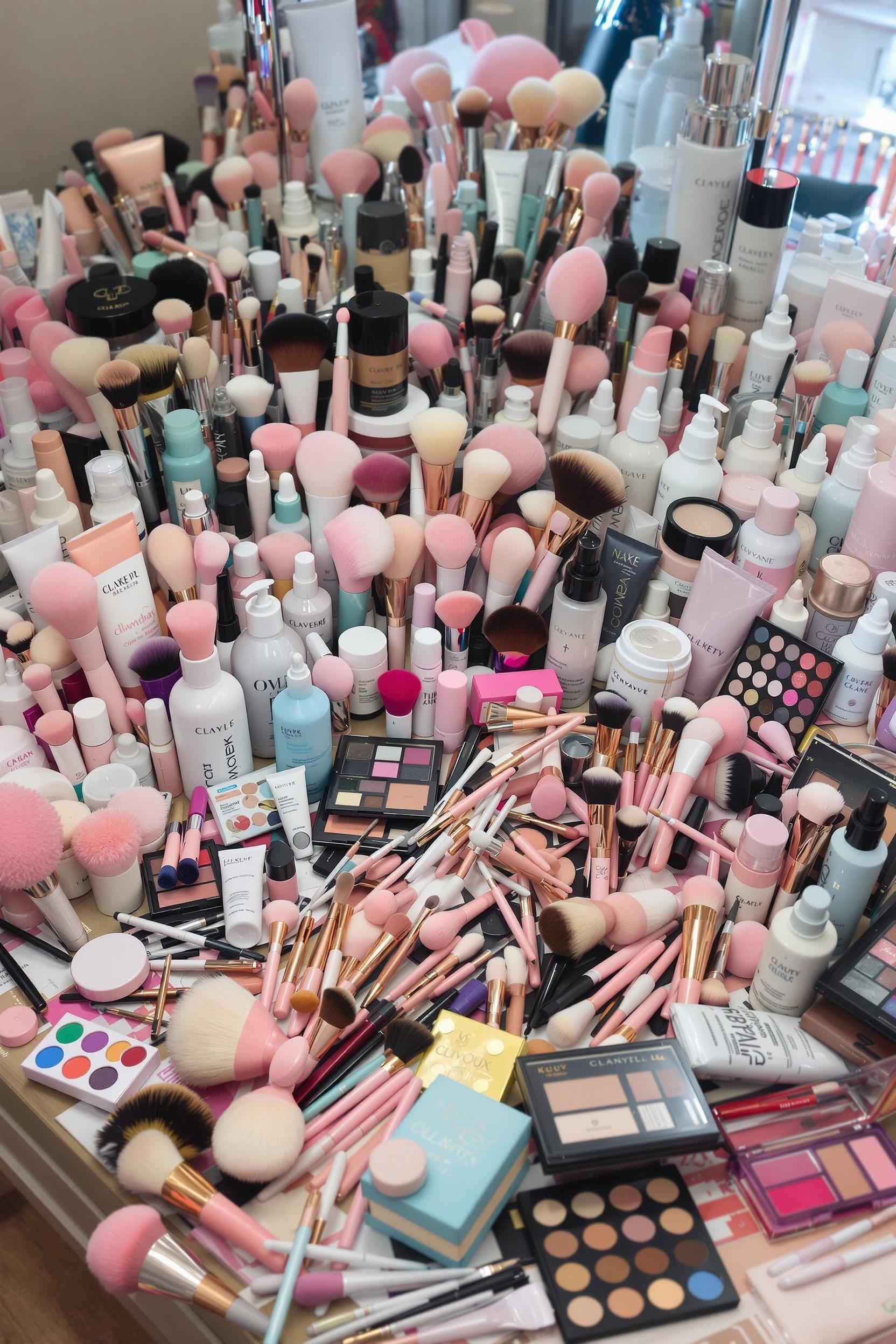
The beauty industry thrives on convincing you to buy multiple versions of the same tools – but you don’t need three different makeup sponges or five identical eyeshadow brushes!
While dupes might seem like a great way to save money, having too many similar items just creates clutter and waste. Instead of collecting duplicates, invest in one quality version of each tool you truly need.
Social media might tempt you with endless “must-have” alternatives, but stick to the basics!
Here’s what to watch out for:
- Identical brushes in slightly different shapes
- Multiple beauty sponges that serve the same purpose
- Duplicate eyelash curlers or tweezers
- Similar makeup applicators in different colors
26) Trendy Home Decor
Social media and home decor retailers love pushing trendy seasonal items that’ll be out of style before you know it!
With home decor becoming a $139 billion industry, stores are flooding the market with “must-have” pieces you probably don’t need.
Instead of impulse-buying the latest trendy items, try the 30-day rule. If you still want that decorative piece after a month, it might be worth it.
Remember, mindful consumption is key – focus on quality over quantity and pieces that’ll stand the test of time.
Looking to refresh your space? Consider decluttering first! You might find you don’t need new decor at all.
27) Single-Use Kitchen Appliances
Despite a booming $10.66 billion kitchen appliance market, you don’t need most of those single-purpose gadgets cluttering up store shelves!
While manufacturers keep pushing specialized tools, many just waste money and cabinet space.
Skip these unnecessary purchases and stick to versatile basics:
- Banana slicers (a regular knife works better!)
- Garlic presses (they’re a pain to clean)
- Pizza scissors (traditional cutters are more efficient)
- Egg separators (just use the eggshell)
Not only will avoiding these items save you money, but you’ll also help reduce plastic waste and environmental impact.
Smart shoppers know that multi-purpose kitchen tools are the way to go! 🔪
28) Impulsive Event Tickets
Have you ever snagged concert tickets on a whim, only to regret the purchase later? You’re not alone!
Studies show that over half of impulse buyers spend $100+ on spontaneous purchases, with event tickets being a common culprit.
The fear of missing out (FOMO) often drives us to click “buy now” without thinking it through. But here’s the truth: those last-minute ticket purchases can drain your wallet and lead to buyer’s remorse.
Instead of giving in to impulse, try these smart moves:
- Wait 24 hours before buying
- Research prices in advance
- Sign up for pre-sales
- Avoid sketchy social media ticket offers
29) Unnecessary Pet Accessories
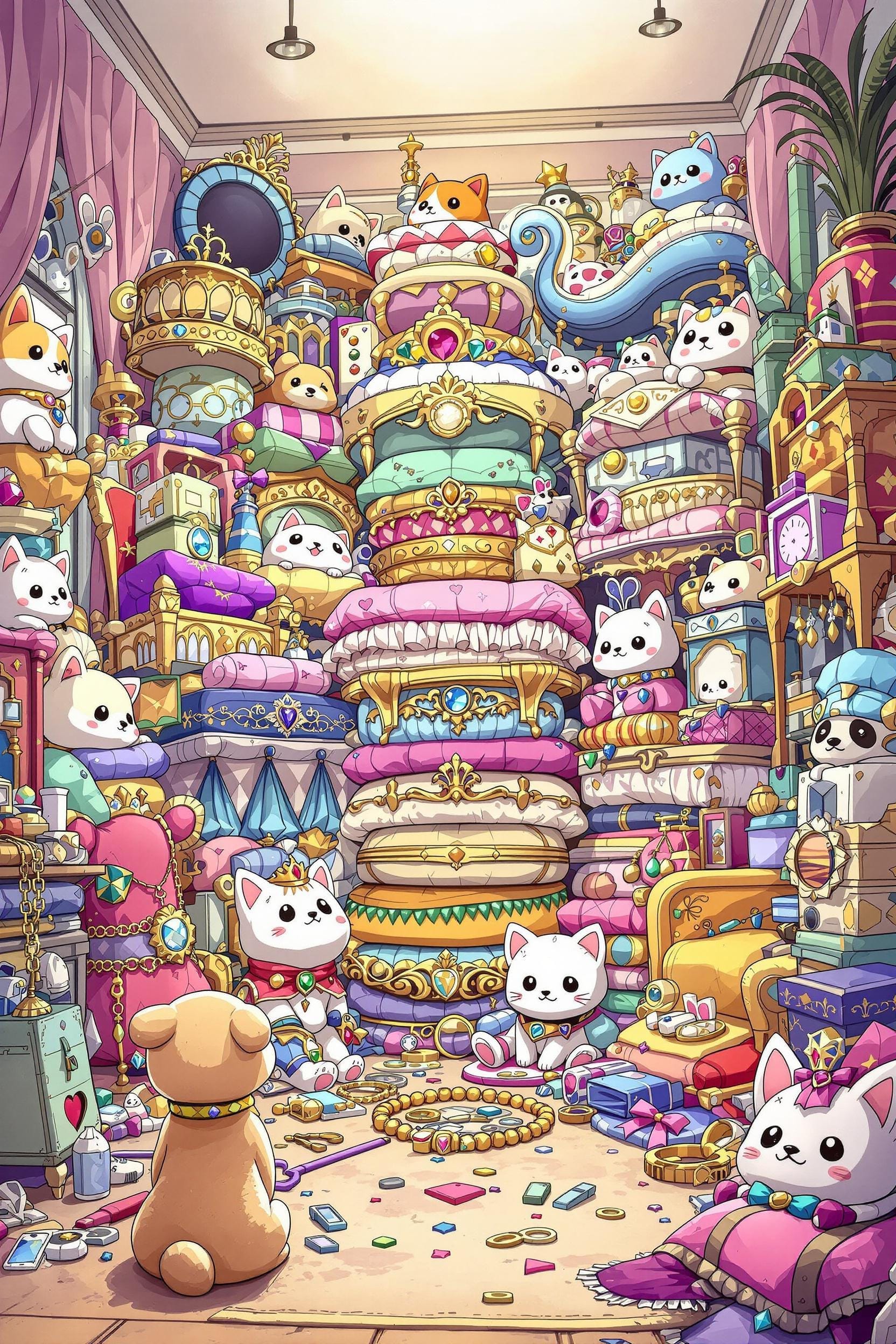
When was the last time you bought a sparkly collar or trendy pet outfit that’s now collecting dust?
While the pet accessories market is booming, not every cute item is worth your money. Sure, some tech gadgets like GPS trackers serve a purpose, but many purchases just drain your wallet!
Before buying another pet accessory, consider these commonly wasteful purchases:
- Designer pet clothing that’s worn once
- Multiple decorative collars in different colors
- Fancy beds your pet ignores for cardboard boxes
- Trendy toys that end up under the couch
Focus on essential items that improve your pet’s health and safety instead.
Your furry friend doesn’t need luxury brand accessories to be happy!
30) Extra Phone Accessories
Once your phone arrives in its sleek new box, you’ll likely feel tempted by the countless accessories promising to make it even better.
But before you load up your cart, think twice! Most of these add-ons end up collecting dust.
Today’s smartphones already pack impressive features that make many accessories unnecessary.
Those clip-on camera lenses? Your phone’s camera is probably amazing already.
And that fancy phone grip? It might just get in the way of wireless charging.
Instead of impulse-buying, ask yourself: “Will I really use this in six months?”
Your wallet – and the environment – will thank you for skipping those unnecessary gadgets! 🎯
31) Bulk Items That Expire
Just like those unnecessary phone gadgets, bulk shopping deals can be a money pit if you’re not careful!
While buying in bulk might seem cost-effective, it’s crucial to reflect on expiration dates and your actual consumption rate.
Most Americans toss perfectly good food because they misunderstand expiration labels.
Before loading up your cart with bulk items, remember these smart shopping tips:
- Check expiration dates and plan realistic usage timelines
- Store items properly to maximize shelf life
- Rotate products to use older items first
- Only buy bulk quantities you can reasonably consume
Don’t let the promise of savings trick you into wasteful purchases.
Smart bulk buying means reflecting on storage space, expiration dates, and your family’s actual needs!
32) Pre-Cut Produce
Although pre-cut produce might seem like a convenient shortcut at the grocery store, you’re often paying up to three times more for those perfectly sliced fruits and veggies!
Not only are you spending more money, but you’re also getting less nutritional value. Once fruits and vegetables are cut, they start losing vitamins and freshness faster due to exposure to oxygen.
Plus, there’s a higher risk of bacterial contamination on those cut surfaces.
Save money by buying whole produce and spending a few minutes prepping it yourself.
If you struggle with cutting certain items like pineapples, watch quick tutorial videos online – you’ll master these skills in no time! 🔪
33) Fancy Organizing Systems

While those sleek organizing systems at The Container Store might catch your eye, they’re often an expensive solution looking for a problem!
Instead of spending your hard-earned money on fancy containers, try focusing on having fewer things first.
Here’s what you should consider before buying expensive organizing products:
- Most Americans already own 300,000 items – do you really need more storage?
- Simple DIY solutions work just as well at a fraction of the cost
- Organizing systems often become clutter themselves when not used properly
- You can achieve better results by decluttering than by buying new systems
34) Multiple Loyalty Programs
Speaking of avoiding unnecessary purchases, let’s talk about those countless loyalty programs taking up space in your wallet and on your phone!
While loyalty programs promise great savings, having too many actually reduces your engagement and makes you spend more impulsively.
The average person belongs to 15+ programs but barely uses most of them! 📱
| Program Type | What Really Happens |
|---|---|
| Store Cards | Forces unnecessary spending |
| Point Systems | Points often expire unused |
| Paid Memberships | Monthly fees add up fast |
| Cash Back | Makes you overspend for rewards |
Instead, stick to 2-3 programs you’ll actually use regularly. Choose ones that match your existing shopping habits rather than changing your spending to chase rewards! 💳
35) Excessive Gift Cards
Have you checked your wallet lately for those forgotten gift cards collecting dust?
You’re not alone – a whopping 43% of Americans have unused gift cards, with an average of $244 just sitting there!
Stop buying excessive gift cards that often go to waste. Here’s why they’re not the smartest purchase:
- 24% of people receive cards for stores that are inconvenient to visit
- 1 in 4 people lose money through gift card scams
- 20% of cards expire before use
- Many cards get lost or forgotten in drawers and wallets
Instead of buying more gift cards, use the ones you have or give cash! Your wallet (and gift recipients) will thank you.
36) High-End Workout Gear
| High-End Gear | Budget-Friendly |
|---|---|
| $98 Leggings | $25 Leggings |
| $65 Sports Bra | $20 Sports Bra |
| $75 Tank Top | $15 Tank Top |
| $120 Hoodie | $30 Hoodie |
| $85 Shorts | $18 Shorts |
While premium brands offer fancy features, most basic workout gear includes moisture-wicking and breathable materials too.
You’re often paying extra for the brand name and trendy designs, not necessarily better performance.
Save that money for your actual fitness goals! 🎯
37) Duplicate Software Licenses
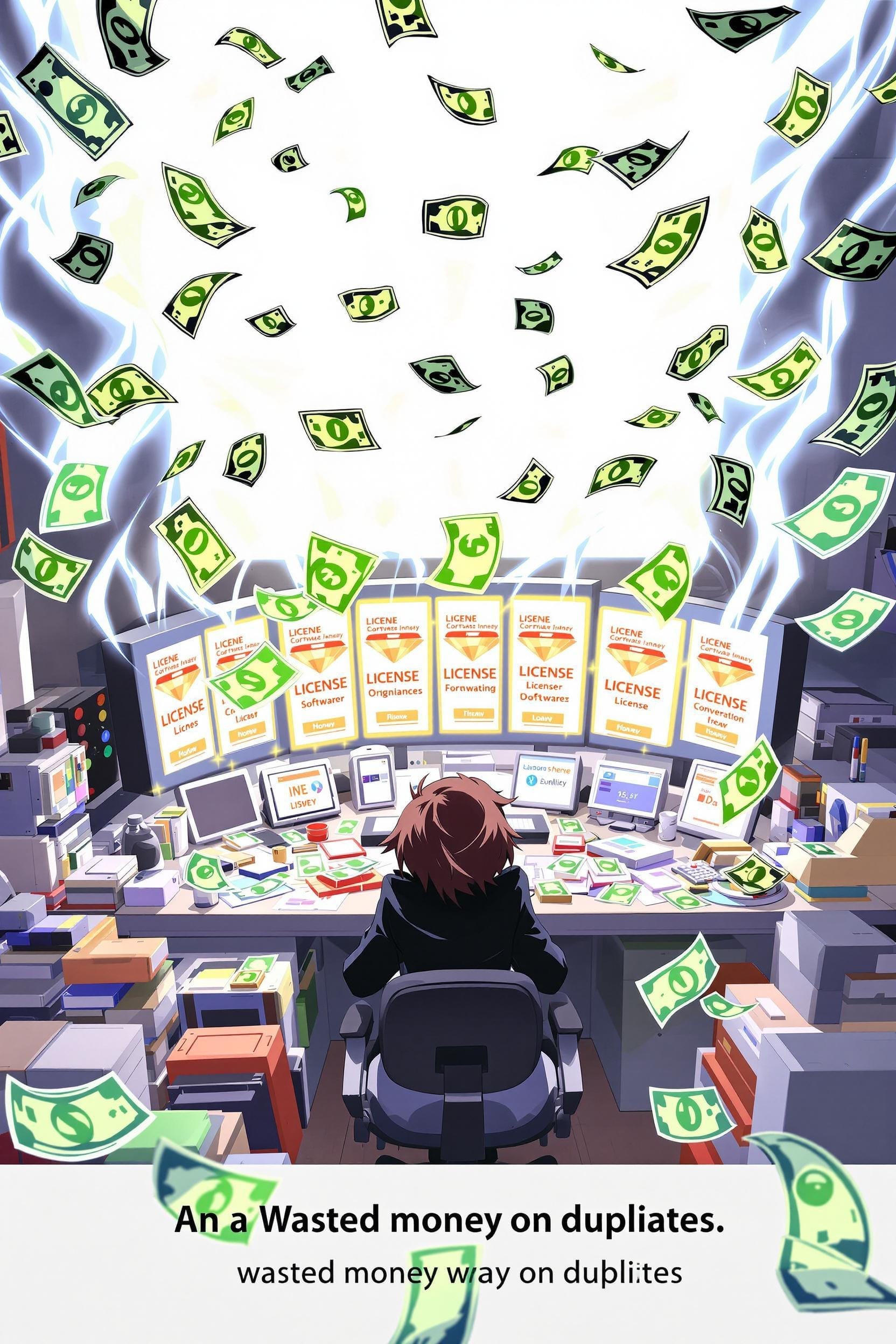
Software sprawl is costing companies millions in wasted licenses and duplicate subscriptions.
You might be doing the same thing at home without realizing it! From unused streaming services to multiple photo storage apps, those monthly charges add up fast.
Here’s what you’re probably wasting money on:
- Overlapping cloud storage subscriptions
- Multiple music streaming services with similar libraries
- Forgotten free trial subscriptions that turned into paid ones
- Apps that do the same thing on different devices
Take a few minutes to audit your digital subscriptions.
You’ll be amazed at how much you can save by consolidating your software and canceling those duplicate services.
It’s like finding free money! 🎉
38) Unnecessary Car Accessories
Car manufacturers make billions selling flashy but unnecessary add-ons that’ll drain your wallet without adding real value.
Before you spend money on car accessories, check out this quick guide to items you should skip!
| Accessory Type | Why It’s Useless | What to Do Instead |
|---|---|---|
| Gigantic Spoilers | Reduces fuel efficiency | Keep stock spoiler |
| LED Light Kits | Often illegal, unsafe | Maintain factory lights |
| Sound Enhancers | Fake engine noise, no benefit | Regular maintenance |
| Decorative Add-ons | Looks cheap, damages paint | Keep it clean & simple |
Don’t fall for these gimmicks! You’ll save money and maintain your car’s value by avoiding unnecessary accessories that only serve to complicate your ride. 🚗
39) Premium Social Media Features
While social media platforms love to tempt you with fancy premium features, you probably don’t need most of those expensive add-ons to have a great online experience!
The standard free features already offer amazing engagement opportunities.
Consider these free alternatives that work just as well:
- Facebook Groups and community features for networking
- Instagram’s built-in content creation tools
- Basic analytics that show your post performance
- Platform-provided AI tools for content optimization
With users spending over 2 hours daily on social media and engagement rates staying strong without premium features, there’s no need to shell out extra cash.
The core features give you everything needed to connect, share, and grow your presence effectively!
40) Bargain Items Never Used
Despite those amazing bargain prices tempting you at every sale, buying items you’ll never use is one of the biggest budget-draining habits!
Think about it – the average person has 118 clothing items, and a quarter of them just collect dust! 😬
When you grab that “amazing deal,” ask yourself:
- Will I actually use this?
- Do I need it, or am I just excited about the price?
- Could this money be better spent elsewhere?
41) Collectible Items
As tempting as it may be to start building your collection of rare coins, vintage toys, or limited-edition collectibles, these investments often drain your wallet without delivering real returns!
Unlike stocks or real estate, collectibles don’t generate regular income. You’ll face constant expenses for storage, insurance, and maintenance.
Plus, their value can swing wildly based on trends and market whims.
Here’s why you should think twice before jumping into collectibles:
- High maintenance costs eat into potential profits
- Values are super subjective and hard to predict
- Selling can be tricky and full of scams
- You’re paying premium prices for emotional appeal
Save your money for investments that actually grow your wealth over time!
42) Duplicate Hair Products
Beauty enthusiasts often fall into the trap of hoarding multiple hair products that basically do the same thing!
With the false hair market booming and social media constantly showcasing new styles, it’s tempting to buy every trendy extension or wig you see.
Before you click “buy” on that third set of clip-ins, consider this: Most synthetic and human hair extensions serve the same basic purpose.
You don’t need multiple versions of the same style! Instead:
- Keep one quality set for each length you wear
- Invest in versatile pieces you can style differently
- Choose products that match your natural hair texture
- Save money by maintaining what you already have
43) Fancy Stationery Sets
Much like those extra hair products cluttering your bathroom, fancy stationery sets can become another money pit in your home!
While beautiful paper and luxury pens might seem tempting, they often end up gathering dust in your drawer.
Despite the rising trend in premium stationery, here’s why you should think twice before splurging:
- Digital alternatives are free and more practical for daily use
- Most fancy sets end up as decoration rather than being used
- Regular office supplies work just as well for basic needs
- Eco-friendly options don’t require buying expensive specialty sets
In today’s digital age, save your money and stick to simple, essential writing tools.
You’ll still get the job done without the unnecessary expense!
44) Multiple Calendar Systems
Keeping track of multiple calendar systems can quickly turn into a productivity nightmare!
You really don’t need to waste money on fancy planners and multiple calendar apps when today’s technology makes life so much simpler.
Instead of juggling different calendars, stick to one digital solution that syncs across all your devices.
Modern cloud-based calendars let you:
- Color-code events by category
- Set automatic reminders
- Share calendars with family or coworkers
- Access everything from anywhere
Save your money and sanity by choosing a single, reliable calendar app.
With features like smart scheduling and cloud backup, there’s no reason to complicate your life with multiple systems! 🗓️
45) Specialty Kitchen Tools
Walking through kitchen stores can feel like entering a gadget wonderland, with shiny tools promising to solve every cooking challenge imaginable!
While it’s true that skilled cooks often have more tools, you don’t need every specialized gadget out there.
Studies show that less than half of Americans own specialty items like zesters and mandolins, yet they cook just fine!
Here’s what to skip buying:
- Single-purpose tools that you’ll rarely use
- Expensive gadgets that duplicate what basic tools can do
- Trendy items that’ll collect dust after one use
- Specialized slicers when a good knife works better
Save money by sticking to versatile basics that you’ll actually use regularly.
46) Themed Party Supplies
The average party host spends hundreds of dollars on themed supplies they’ll only use once!
While themed decorations might look great on social media, they often end up collecting dust or heading straight to the trash.
Instead of buying expensive single-use items, try these money-saving alternatives:
- Borrow decorations from friends who’ve hosted similar parties
- Use versatile items you can repurpose for future events
- Create DIY decorations from materials you already have
- Rent specialty items for big occasions
- Skip trendy themed supplies and stick to classic party basics
Your guests will remember the fun they had, not whether your napkins matched the perfect theme! 🎉
47) Quick-Fix Health Products
While quick-fix health products promise dramatic results with minimal effort, they’re usually a waste of your hard-earned money and can even be dangerous!
These products prey on your desire for fast results but often lead to disappointment and health risks. Instead of falling for miracle pills or crash diets, focus on sustainable lifestyle changes.
Here’s what you’re really getting with quick-fix products:
- Empty promises and temporary results
- Potential interactions with medications
- Risk of developing unhealthy eating habits
- Wasted money that could go toward real health solutions
Save your money and protect your wellbeing by avoiding these deceptive products. Your body will thank you! 🌟
48) Promotional Items
Before accepting another branded pen or cheap water bottle at your next conference, consider how promotional items are wreaking havoc on our environment!
Two-thirds of these freebies end up in landfills, where they’ll take centuries to decompose.
| Impact Type | Traditional Items | Sustainable Options |
|---|---|---|
| Lifespan | Few weeks or months | Years of use |
| Materials | Non-biodegradable plastic | Recycled or natural |
| Environmental Cost | High pollution | Minimal impact |
| Value for Money | Low, disposable | High, reusable |
You’re better off politely declining these items or requesting digital alternatives.
If you must accept promotional items, opt for sustainable options like reusable bags or biodegradable products. Your choices matter! 🌱
49) Duplicate Power Banks
Many of us have fallen into the trap of buying multiple power banks “just in case,” but that extra backup for your backup isn’t doing your wallet or the planet any favors!
With the market growing to $29.15 billion by 2032, it’s time to be smarter about our portable charging habits.
Instead of collecting multiple power banks, invest in one high-capacity model (8,001-20,000 mAh).
Here’s why you should stop buying duplicates:
- You’re wasting money that could go toward other essentials
- Extra power banks create unnecessary electronic waste
- Multiple chargers lead to cluttered spaces and travel bags
- Power bank sharing services offer convenient alternatives
Frequently Asked Questions
How Can I Identify Emotional Triggers That Lead to Impulse Buying?
You can identify your emotional triggers by tracking when you shop impulsively – notice if you’re stressed, excited, or sad. Keep a mood journal alongside your purchases to spot patterns in your buying behavior.
What’s the Best Way to Track and Calculate Total Monthly Subscription Costs?
Like gathering scattered puzzle pieces, list all your subscriptions in a dedicated tracking app. You’ll get a clear picture of costs when you regularly update and categorize each service’s monthly or annual fees.
How Long Should I Wait Before Making a Non-Essential Purchase?
You should wait at least 30 days before making non-essential purchases. If it’s still important after this cooling-off period, you’ll make a more thoughtful decision and avoid impulse buying entirely.
Which Shopping Apps Should I Delete to Reduce Unnecessary Spending?
Like a moth to a flame, you’re drawn to shopping apps. Delete Amazon, Instagram, TikTok, and fashion apps like SHEIN or Zara that trigger impulse buying. Keep only essential shopping apps you regularly need.
What Percentage of Unused Items Can Typically Be Returned for Refunds?
You can typically return about 85% of unused items within the standard return window, but you’ll need to keep tags attached and original packaging intact. Check each store’s specific return policy for details.
Last Word
While you’re busy chasing the newest trends and filling your cart with “must-have” items, your bank account’s taking a hit!
It’s time to flip the script – what you don’t buy matters more than what you do.
Start cutting these 49 unnecessary purchases today, and you’ll be amazed at how quickly your savings grow.
Remember: Less clutter means more freedom, and smarter spending leads to better living.

